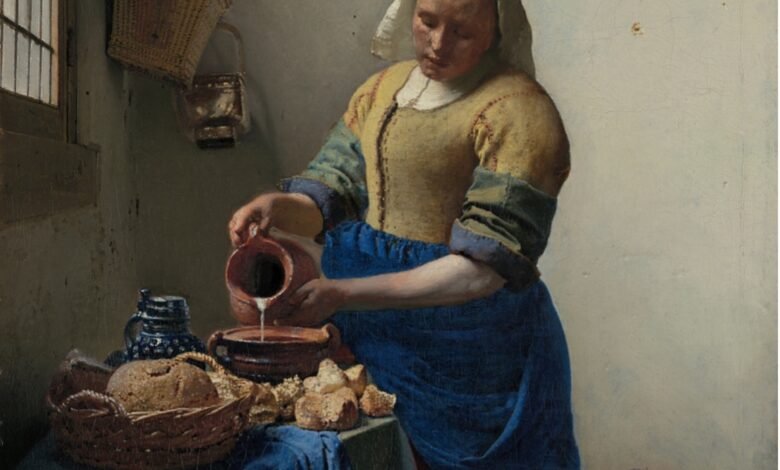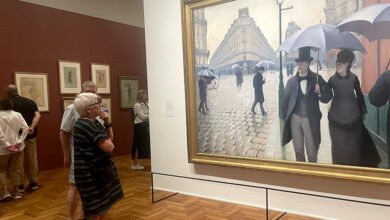
The starting point is not just the 17th-century era or the setting. It is Vermeer, keeping in mind the central personal choices he knowingly made as he reached maturity. The rules were set in Dutch law (i.e., Calvinism was the official religion, only Calvinists could run for public office, the Catholic mass could not be celebrated, and Catholic icons could be—and brutality were—destroyed). The law was enforced with the certainty of earned (during the bitter revolt against Catholic Spain) and righteous condescension and the arbitrary pretext of predestination of the “elect”—what I describe as “who was in, who was out, and who decided it (in reality, not God).” Included among the “out” were non-middle-class Calvinists and, plainly, all Catholics. Look again at The Milkmaid, treated like a serf, poorly paid, and punished at will. Yet, as the public often sees her—as Vermeer elevated and I describe her—“not only as a hard-working commoner but also a dissident, a bulwark with an ethic of determined and confident perseverance . . . within a Dutch society gone terribly astray.”
And within the Dutch Republic (and throughout northern Europe), however discreetly exercised, was the intellectual and skilled force of the Counter-Reformation, the Catholic Church’s determined effort to stop, challenge, and undermine everything Martin Luther, John Calvin, and others had wrought in a battle for governance and wealth, not only souls. From the Council of Trent (1545) onward, art, in all its forms, was a poignant means of advocacy. The Dutch had transformed its power into law. Despite, for example, the sentiment affixed to Vermeer’s paintings in a later era, there are no soft, tender feelings of “love” or “love letters” in Vermeer’s portrayal of women. Calvinism—and the Roman and Greek meaning of “love” in the 17th century—bore no relationship to the 20th-century western definition embraced by the academy that neutered Vermeer’s imperative.
The choices Johannes Vermeer made were:
- To convert from his birth family’s committed Calvinism—affirmed in the war against Spain—to his own Catholicism
- To live in the home of his cunningly devoted Catholic mother-in-law, Maria Thins
- To live in the De Paepenhoek (Papists’ Corner)—characterized by historian and artist Jonathan Janson as the Catholic “ghetto”—a few feet from the once Catholic New Church, which, stripped by force of its icons and repainted wholly white, remains readily visible then and now as the Calvinist New Church
- To live next to the Jesuit Station, where the Catholic mass was held clandestinely, his 11 children were taught, and he was educated in the manner of painting biblical and religious moments
- To accept that all such education and risk-taking was led by the Jesuit Catholic order designated by the Pope to lead the Counter-Reformation, as teachers and, critically, as advocates against power, authority, culture, and the legally sanctioned Calvinist religion of the Dutch Republic
Vermeer made these choices as a parent, husband, trained artist, and small and vulnerable business owner trading in other people’s artworks.
Source link



